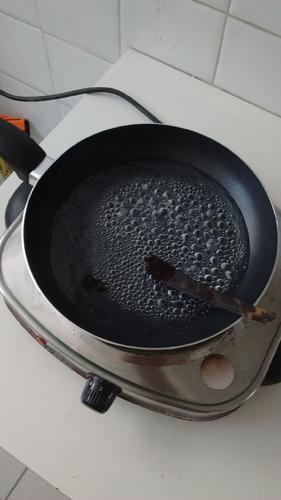Results 1,941 to 1,950 of 4688
Thread: The Butchered Blade
-
10-19-2015, 03:32 PM #1941

Ugh, I just realized that I wrote that wrong. On number one, I've found that I'm able to keep from removing as much spine thickness that way. It still happens but not to the extent.
On older blades I think also that the spine is of softer metal and so easier to remove material. Also easier to round off and keep that line sharp. Easy movements with the sand paper back and forth instead of getting it perfectly to that lip and making smaller movements accurately.
Ofcourse the line will be brought up towards the spine some too as the face is worked, but only until it done. But without the need or intent of removing hone wear, more so simply focusing on the uniform finish of the face.
At that point moving to the spine.
But yeah, if there is serious hone wear, the face would need more work bringing that line up.. IMOLast edited by MikeT; 10-19-2015 at 03:37 PM.
“You must unlearn what you have learned.”
– Yoda
-
10-19-2015, 03:40 PM #1942

Bill, simichrome and Maas seem pretty close to me. Blue magic seems much lighter. Best to brighten gold wash, etc.
"Don't be stubborn. You are missing out."
I rest my case.
-
-
10-19-2015, 03:52 PM #1943
-
10-19-2015, 03:59 PM #1944
 Some photos of the preliminar work on the J. Rodgers turtle frenchy
Some photos of the preliminar work on the J. Rodgers turtle frenchy
And so... it arrived as this: assembled, but with poorly glued backside scale.

Reppined, of course. I never found until this date a factory pinned razor with copper pins.

Unpinned and initial cleaning/sanding:

Boiling the backside scale pieces to bond together:


The bonded pieces were pressed together between hot moist wood planks, under the bed's foot. (Kind of Klugdy press).
Sanding (note the depression caused by the previous pinning. A lot of pressure was applied on this scales. This pressure caused its breakage. Turtle is not a weak material, is way stronger than celluloid and an amazing strong material even when compared with modern plastics.

Further sanding and saving the turtle powder. Powder mixed with slow-curing flex-coat resin and used to fill remaining gaps:

Note the bonding lines between the turtle plates bonded to make the scales:

Final sanding: no bonding marks


The resin is slow-curing type, and life is not only razor-related things. Milady must be obeyed and cared for, so it's all for now, dudes.
The next step is to attach the polycarbonate sheets on the medial face of scales.
-
-
10-19-2015, 03:59 PM #1945

It would have never happened if it wasn't for you guys
Mike
-
10-19-2015, 05:11 PM #1946

Awesome job, Matheus!
 "Don't be stubborn. You are missing out."
"Don't be stubborn. You are missing out."
I rest my case.
-
10-19-2015, 05:32 PM #1947
-
The Following User Says Thank You to outback For This Useful Post:
engine46 (10-19-2015)
-
10-19-2015, 05:37 PM #1948

Dave I always used Maas but now I will be trying some greaseless since I have some plus I will also be trying simply some crop & see how well that works. It makes common sense. It would work so I really want to try some. Tom is the one to give credit to for that one. He first brought it up & I might have thought about it at one point in time but when would be a question there.
Last edited by engine46; 10-19-2015 at 05:53 PM.
-
10-19-2015, 05:43 PM #1949
-
The Following User Says Thank You to Matheus For This Useful Post:
MikeT (10-19-2015)
-
10-19-2015, 05:55 PM #1950


 13682Likes
13682Likes LinkBack URL
LinkBack URL About LinkBacks
About LinkBacks






 Reply With Quote
Reply With Quote






